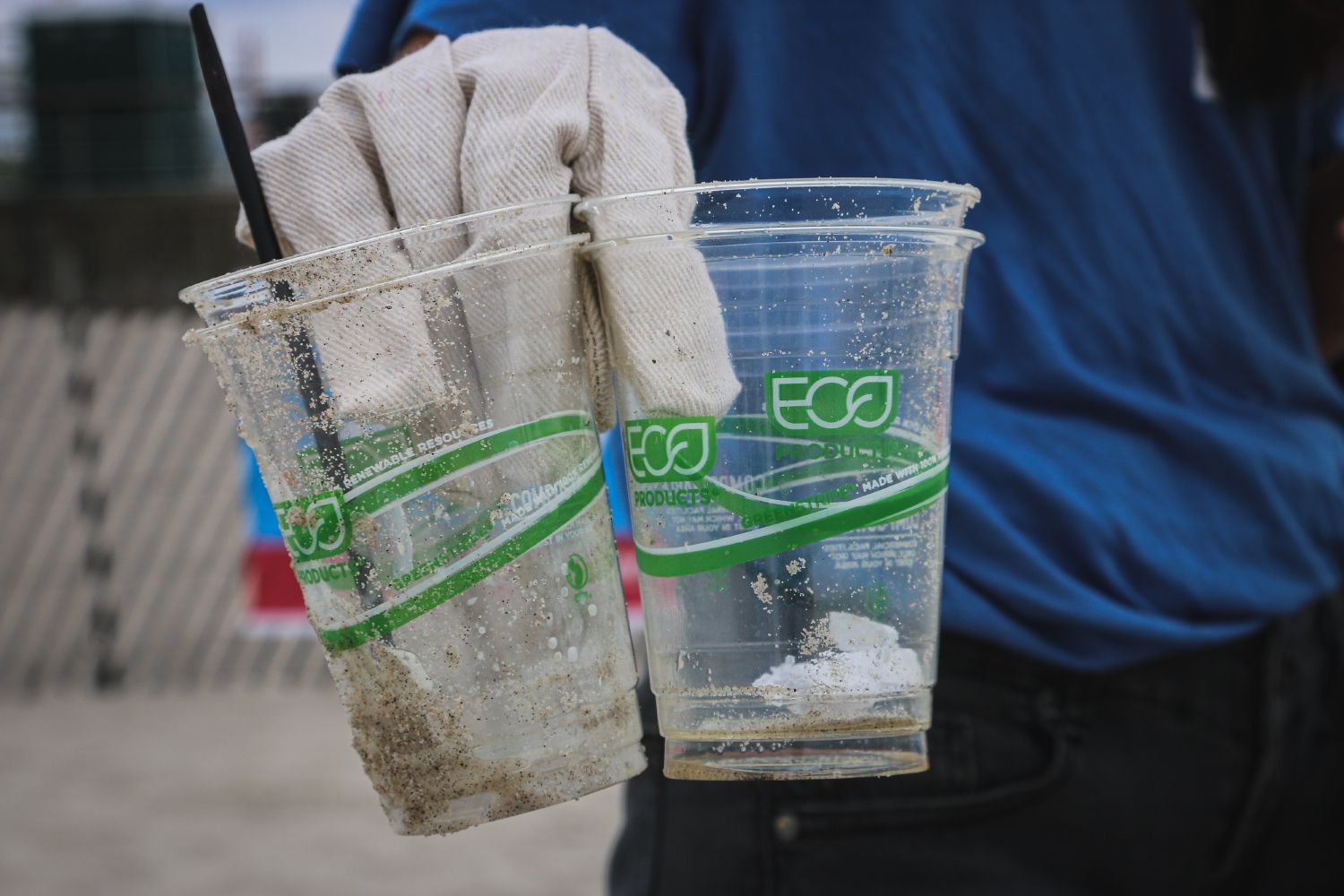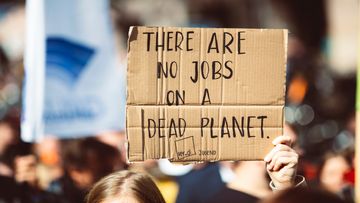Greenwashing is everywhere. Ever since sustainability became a trend, companies have increased their efforts to appear more environmentally friendly. Even though increasing interest in sustainability has led many companies to permanently change their business model and make positive contributions for the environment, there are also companies that have taken advantage of it. These companies are presenting themselves and their products more sustainable than they are in reality. They are, in other words, greenwashing.
What is greenwashing?
Greenwashing is an attempt by a company to appear more environmentally friendly than they actually are. This is commonly done by providing misleading or false information about the company’s products and services to make them look more sustainable. Greenwashing is often done on purpose to boost sales and the image of the company.
There are many ways in which companies can practice greenwashing. However, this often happens by misrepresenting scientific information, confusing customers with complex or vague terminology, or using green labels and images that misrepresent the true nature of their products. A common example is companies planting a tree per purchased product. Planting a tree can nowhere near make up for the environmental damage caused by most products in their life cycle. While planting a tree is not inherently a bad thing, making the customer think they are doing something positive for the environment by buying the product is - this is greenwashing.
Why is greenwashing bad?
The core issue with greenwashing is that the companies make more effort to market themselves as sustainable than they do to minimize their environmental impacts.
Even though it’s not uncommon for greenwashing campaigns to involve steps in the right direction, for example by introducing a more sustainable alternative to the products that a company used to sell, greenwashing misleads consumers to believe that a company is taking real environmental responsibility. This is problematic as the environmental problems often remain in the background. Greenwashing shifts focus away from the problems and makes it more difficult for customers to hold the company accountable for environmental issues.
From the perspective of a customer, greenwashing is an issue as it takes advantage of the customers’ good intentions. Greenwashing campaigns use sustainability as a branding tool to boost their sales, and direct money streams towards unsustainable business models. On top of this, greenwashing campaigns often encourage mass consumption which goes directly against the sustainability ethos.
How to identify greenwashing?
One of the easiest ways to identify greenwashing is to look at a company’s ethics and values. Looking at a company’s business model, environmental policies, emissions, and what the company produces alongside the sustainable products are good indicators of whether the company is likely to be greenwashing. For example, the efforts of oil corporations to produce green energy don’t outweigh the negative environmental impacts of fossil fuel extraction. Similarly, if a company’s business model relies on mass consumption of unsustainable products that have been produced in a country with little to no environmental safety standards, there is a good chance that the company is greenwashing.
Another way to identify greenwashing is to look at the terminology, labels, and imagery that companies use in their products. Companies often use vague terms such as ‘natural’ and ‘green’ to appear more sustainable. These terms are rarely backed up with any actual proof about the sustainability of the product. Another way to fool customers is to use terminology like ‘biodegradable’ as many people have positive associations with it. The green terminology is often supported by pictures of nature and green color, as people associate them with environmentally friendly products. Many of these products are also accompanied by different labels that seek to convince customers about the company’s values. However, unless these labels are certified, they provide little to no proof about the company’s sustainability standards.
Examples of companies that are greenwashing campaigns
Who does greenwashing? Unfortunately, it might be easier to ask who doesn’t. We’ve listed some examples of companies and their greenwashing campaigns, but these take place all across industries.
Exxon Mobile
It’s typical for fossil fuel companies to invest in green technologies to give customers the idea that the company is making real change. Exxon is no different.
One of Exxon’s greenwashing campaigns included a plan to start producing algae-biofuel. Exxon marketed algae-biofuel as a new source of green energy and proudly stated that the company would be producing 10 000 barrels of biofuel per day by 2025. What was conveniently left out of this marketing campaign was the fact that these barrels would only equate 0.2% of the company’s refinery capacity and that Exxon is only spending 0.5% of its revenue to develop green energy. On top of that, Exxon is expected to further increase its fossil fuel production capacity in the future. When these facts are taken into consideration, it is clear that Exxon’s biofuel campaign is simply an attempt to portray a more positive image of the company.
H&M
H&M rises regularly to the spotlight in greenwashing discussions. The company has launched several sustainability campaigns over the past years but the campaigns continue to miss the mark. In 2020 the company announced its plan to produce clothing from a more sustainable material called Circulose, and only last month H&M made the pledge to only use recycled or sustainably sourced materials in its production by 2030.
While these campaigns certainly show steps in the right direction, they shift focus away from the fact that H&M is essentially a fast fashion company and that fast fashion can never be sustainable. The company’s sustainability efforts are completely outweighed by the amount of clothing that H&M is producing and the harm that this process causes to the environment.
Volkswagen
In 2015 Volkswagen got caught for having cheated in its emission tests. The company had run a big greenwashing campaign that had marketed the environmental benefits of its “low emission” diesel cars. It later turned out that Volkswagen had fitted its cars with software that could detect when the cars were being tested. This allowed the company to massively manipulate the test results: in reality the engines were emitting 40 times more nitrogen oxide than is allowed in the USA.
Volkswagen’s case is one of the most obvious examples of greenwashing on this list. Unlike the other examples, Volkswagen hasn’t just made sustainable promises to appeal to its customers. It has knowingly manipulated performance data to make the company look more sustainable, while simultaneously continuing to harm the environment with dangerously high emissions.
Nestlé
It shouldn’t come as a surprise to anyone that Nestlé is on this list. One of Nestlé’s greenwashing campaigns has been the pledge to make all of the company’s plastic packaging 100% recyclable or reusable by 2025. Having the opportunity to reuse or recycle plastic is great, but the pledge completely ignores the fact that the plastic problem that Nestlé is fighting against was partly created by the company itself. Organizations such as Greenpeace have widely criticized Nestlé for focusing on changing the way that the company uses plastic instead of changing its overall business model.
How can greenwashing be prevented?
Greenwashing is unfortunately legal and the responsibility of making sustainable choices is left to the customers. This requires customers to do research on companies and educate themselves about the complex terminology around green products.
Here are some steps that you can take as a customer to identify greenwashing:
- Research the company. Take a look at their business model and see what the company’s environmental policies are. Is the business model circular? What are the emissions like and does the company remove or offset them? Make sure to search for articles written by third parties to get a better understanding of the situation.
- Find out where the products are made. Many companies make their products in the Global South due to looser environmental restrictions. If this is the case, find out what the companies have done to ensure that environmental safety standards are in place.
- Familiarize yourself with the vocabulary and green labels. What does biodegradable mean? Is the sustainability label in the product certified or not? Greenwashing relies on small details and if you speak the same language as the company, there is a good chance that you can avoid greenwashing.
- Be sceptical. Think about the product that you are buying. Is the product marketed green because having it will have a positive impact on the planet, or is the label there to encourage you to consume more?
Try to always support companies that are transparent with their environmental values and that are showing real commitment towards protecting the planet. At the same time, it is important to keep companies accountable. If you identify a greenwashing campaign, make sure that the business knows it.
- Call them out. Simple actions such as commenting on their social media posts raise awareness of greenwashing and help to keep the company accountable for their actions.
- Contact them. Send the company an email and ask them why they’re not doing more for the environment.
- Spread information. Most of the people who fall for greenwashing want to make sustainable choices. Telling your friends and family about the unethical practices that a company is making helps them to make better choices.



